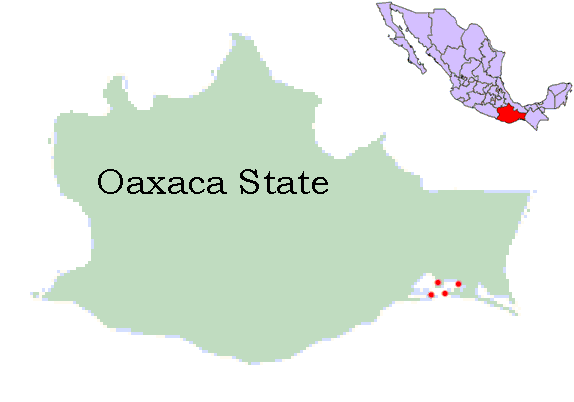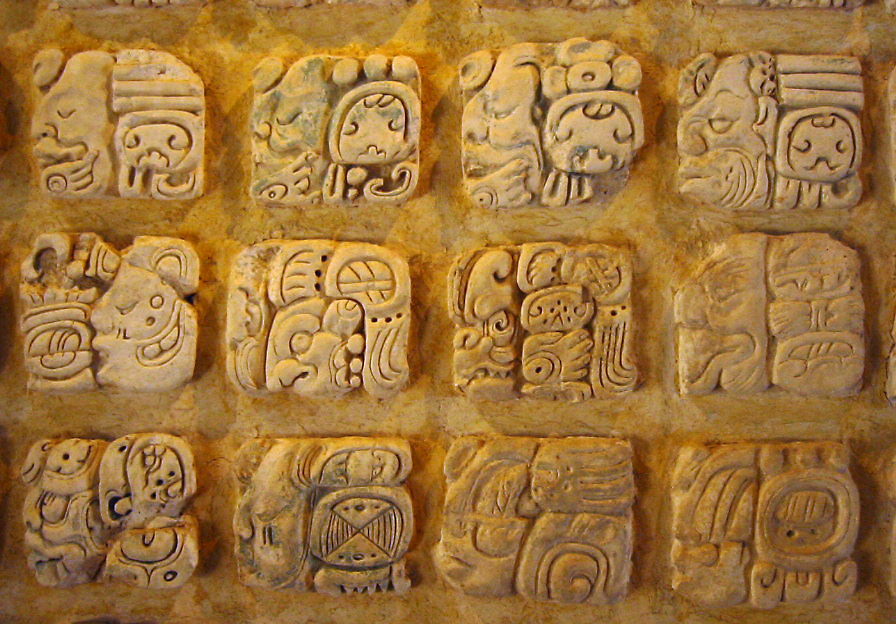|
Totozoque Languages
Totozoquean is a proposed language family of Mesoamerica, originally consisting of two well-established genetic groupings, Totonacan and Mixe–Zoque. The erstwhile isolate Chitimacha was later proposed to be a member. The closest relatives of Totozoquean may be the Huavean languages. Correspondences Comparative proto-Totozoquean reconstructions are proposed in Brown et al. (2011) for simple consonants and vowels. The consonant-inventory for proto-Totozoquean is similar to that reconstructed for proto-Totonacan (Arana Osnaya 1953), and the vowels are not unlike those proposed for proto-Mixe–Zoquean (Wichmann 1995). A parallel set of laryngealized but otherwise identical proto-Totozoquean vowels is reconstructed for proto-Totozoquean to account for the distribution of laryngealized vowels in the Totonac branch of the Totonacan family, though these left no known trace in proto-Mixe–Zoquean (Wichmann 1995) and there may be a more economical explanation. Vowel length is likewis ... [...More Info...] [...Related Items...] OR: [Wikipedia] [Google] [Baidu] |
Mexico
Mexico (Spanish: México), officially the United Mexican States, is a country in the southern portion of North America. It is bordered to the north by the United States; to the south and west by the Pacific Ocean; to the southeast by Guatemala, Belize, and the Caribbean Sea; and to the east by the Gulf of Mexico. Mexico covers ,Mexico ''''. . making it the world's 13th-largest country by are ... [...More Info...] [...Related Items...] OR: [Wikipedia] [Google] [Baidu] |
Language Family
A language family is a group of languages related through descent from a common ''ancestral language'' or ''parental language'', called the proto-language of that family. The term "family" reflects the tree model of language origination in historical linguistics, which makes use of a metaphor comparing languages to people in a biological family tree, or in a subsequent modification, to species in a phylogenetic tree of evolutionary taxonomy. Linguists therefore describe the ''daughter languages'' within a language family as being ''genetically related''. According to '' Ethnologue'' there are 7,151 living human languages distributed in 142 different language families. A living language is defined as one that is the first language of at least one person. The language families with the most speakers are: the Indo-European family, with many widely spoken languages native to Europe (such as English and Spanish) and South Asia (such as Hindi and Bengali); and the Sino-Tibetan famil ... [...More Info...] [...Related Items...] OR: [Wikipedia] [Google] [Baidu] |
Huavean Languages
Huave (also spelled Wabe) is a language isolate spoken by the indigenous Huave people on the Pacific coast of the Mexican state of Oaxaca. The language is spoken in four villages on the Isthmus of Tehuantepec, in the southeast of the state, by around 20,000 people (see table below). Name of the language The Huave people of San Mateo del Mar, who call themselves ''Ikoots'', meaning "us," refer to their language as ''ombeayiiüts,'' meaning "our language". In San Francisco del Mar, the corresponding terms are ''Kunajts'' ("us") and ''umbeyajts'' ("our language"). The term "Huave" is thought to come from the Zapotec languages, meaning "people who rot in the humidity", according to the 17th-century Spanish historian Burgoa. However, Martínez Gracida (1888) claims the meaning of the term means 'many people' in Isthmus Zapotec, interpreting ''hua'' as "abundant" and ''be'' as a shortened form of ''binni'' ("people"). The etymology of the term requires further investigation. Neithe ... [...More Info...] [...Related Items...] OR: [Wikipedia] [Google] [Baidu] |
Totonacan Languages
The Totonacan languages (also known as Totonac–Tepehua languages) are a Language families, family of closely related languages spoken by approximately 290,000 Totonac (approx. 280,000) and Tepehua people, Tepehua (approx. 10,000) people in the states of Veracruz, Puebla, and Hidalgo (Mexico), Hidalgo in Mexico. At the time of the Spanish conquest of Mexico, Spanish conquest Totonacan languages were spoken all along the gulf coast of Mexico. During the colonial period, Totonacan languages were occasionally written and at least one grammar was produced. In the 20th century the number of speakers of most varieties have dwindled as indigenous identity increasingly became stigmatized encouraging speakers to adopt Spanish as their main language. The Totonacan languages have only recently been compared to other families on the basis of historical-comparative linguistics, though they share numerous areal features with other languages of the Mesoamerican Linguistic Area, such as the Maya ... [...More Info...] [...Related Items...] OR: [Wikipedia] [Google] [Baidu] |
Mixe–Zoque Languages
The Mixe–Zoque (also: Mixe–Zoquean, Mije–Soke, Mije–Sokean) languages are a language family whose living members are spoken in and around the Isthmus of Tehuantepec, Mexico. The Mexican government recognizes three distinct Mixe–Zoquean languages as official: Mixe or ''ayook'' with 188,000 speakers, Zoque or ''o'de püt'' with 88,000 speakers, and the Popoluca languages of which some are Mixean and some Zoquean with 69,000 speakers. However, the internal diversity in each of these groups is great. Ethnologue counts 17 different languages, and the current classification of Mixe–Zoquean languages by Wichmann (1995) counts 12 languages and 11 dialects. Extinct languages classified as Mixe–Zoquean include Tapachultec, formerly spoken in Tapachula, along the southeast coast of Chiapas. History Historically the Mixe–Zoquean family may have been much more widespread, reaching into the Guatemalan Pacific coast (i.e. the Soconusco region). Terrence Kaufman and Lyle Camp ... [...More Info...] [...Related Items...] OR: [Wikipedia] [Google] [Baidu] |
Chitimacha Language
Chitimacha ( or , Sitimaxa) is a language isolate historically spoken by the Chitimacha people of Louisiana, United States. It became extinct in 1940 with the death of the last fluent speaker, Delphine Ducloux. Although no longer spoken, it is fairly extensively documented in the early 20th-century work (mostly unpublished) of linguists Morris Swadesh and John R. Swanton. Swadesh in particular wrote a full grammar and dictionary, and collected numerous texts from the last two speakers, although none of this is published. Language revitalization efforts are underway to teach the language to a new generation of speakers. Tribal members have received Rosetta Stone (software), Rosetta Stone software for learning the language. As of 2015, a new Chitimacha dictionary is in preparation, and classes are being taught on the Chitimacha reservation. Classification Chitimacha has recently been proposed to be related to, or a member of, the hypothetical Totozoquean languages, Totozoquean ... [...More Info...] [...Related Items...] OR: [Wikipedia] [Google] [Baidu] |
Mesoamerica
Mesoamerica is a historical region and cultural area in southern North America and most of Central America. It extends from approximately central Mexico through Belize, Guatemala, El Salvador, Honduras, Nicaragua, and northern Costa Rica. Within this region pre-Columbian societies flourished for more than 3,000 years before the Spanish colonization of the Americas. Mesoamerica was the site of two of the most profound historical transformations in world history: primary urban generation, and the formation of New World cultures out of the long encounters among indigenous, European, African and Asian cultures. In the 16th century, Eurasian diseases such as smallpox and measles, which were endemic among the colonists but new to North America, caused the deaths of upwards of 90% of the indigenous people, resulting in great losses to their societies and cultures. Mesoamerica is one of the five areas in the world where ancient civilization arose independently (see cradle of civ ... [...More Info...] [...Related Items...] OR: [Wikipedia] [Google] [Baidu] |
Wiktionary
Wiktionary ( , , rhyming with "dictionary") is a multilingual, web-based project to create a free content dictionary of terms (including words, phrases, proverbs, linguistic reconstructions, etc.) in all natural languages and in a number of artificial languages. These entries may contain definitions, images for illustration, pronunciations, etymologies, inflections, usage examples, quotations, related terms, and translations of terms into other languages, among other features. It is collaboratively edited via a wiki. Its name is a portmanteau of the words ''wiki'' and ''dictionary''. It is available in languages and in Simple English. Like its sister project Wikipedia, Wiktionary is run by the Wikimedia Foundation, and is written collaboratively by volunteers, dubbed "Wiktionarians". Its wiki software, MediaWiki, allows almost anyone with access to the website to create and edit entries. Because Wiktionary is not limited by print space considerations, most of Wiktio ... [...More Info...] [...Related Items...] OR: [Wikipedia] [Google] [Baidu] |
Macro-Mayan
Macro-Mayan is a proposal linking the clearly established Mayan family with neighboring families that show similarities to Mayan. The term was apparently coined by McQuown (1942), but suggestions for historical relationships relevant to this hypothesis can be traced back to the Squier (1861), who offered comparisons between Mayan and Mixe-Zoquean languages, and Radin (1916, 1919, 1924), who did the same for Mixe-Zoquean, Huave, and Mayan. History of proposals McQuown (1942, 1956) defined Macro-Mayan as the hypothetical ancestor of Mayan, Mije-Sokean, and Totonacan, further promoting the hypothesis. However, his hypothesis relied on the presence of "a glottalized series" of consonants in both Mayan and Totonakan. Such a trait could have potentially spread through contact. McQuown also admitted that “the relatively small number of coincidences in vocabulary indicates to us that this kinship is quite distant” (McQuown 1942:37-38). The hypothesis was not elaborated until 1979 whe ... [...More Info...] [...Related Items...] OR: [Wikipedia] [Google] [Baidu] |
Søren Wichmann
Søren Wichmann (born 1964) is a Danish linguist specializing in historical linguistics, linguistic typology, Mesoamerican languages, and epigraphy. Since June 2016, he has been employed as a University Lecturer at Leiden University Centre for Linguistics, Leiden University, after having worked at different institutions in Denmark, Mexico, Germany and Russia, including, during 2003-2015, the Department of Linguistics, Max Planck Institute for Evolutionary Anthropology. Wichmann's PhD dissertation, from the University of Copenhagen, treated the Azoyú variety of Tlapanec spoken in Guerrero, Mexico. He has written extensively about Mayan, Oto-Manguean and Mixe–Zoquean languages. He has done fieldwork on Mixe, Texistepec Popoluca and Tlapanec. Regarding Mixe–Zoquean, he has done comparative work resulting in the currently most accepted classification of the Mixe–Zoquean language family as well as a reconstruction of its vocabulary and grammar (Wichmann 1995). He also speci ... [...More Info...] [...Related Items...] OR: [Wikipedia] [Google] [Baidu] |
Mesoamerican Languages
Mesoamerican languages are the languages indigenous to the Mesoamerican cultural area, which covers southern Mexico, all of Guatemala and Belize and parts of Honduras and El Salvador and Nicaragua. The area is characterized by extensive linguistic diversity containing several hundred different languages and seven major language families. Mesoamerica is also an area of high linguistic diffusion in that long-term interaction among speakers of different languages through several millennia has resulted in the convergence of certain linguistic traits across disparate language families. The Mesoamerican sprachbund is commonly referred to as the Mesoamerican Linguistic Area. The languages of Mesoamerica were also among the first to evolve independent traditions of writing. The oldest texts date to approximately 1000 BCE (namely olmec and zapotec), though most texts in the indigenous scripts (such as Maya) date to c. 600–900 CE. Following the arrival of the Spanish in the 16th century, ... [...More Info...] [...Related Items...] OR: [Wikipedia] [Google] [Baidu] |



